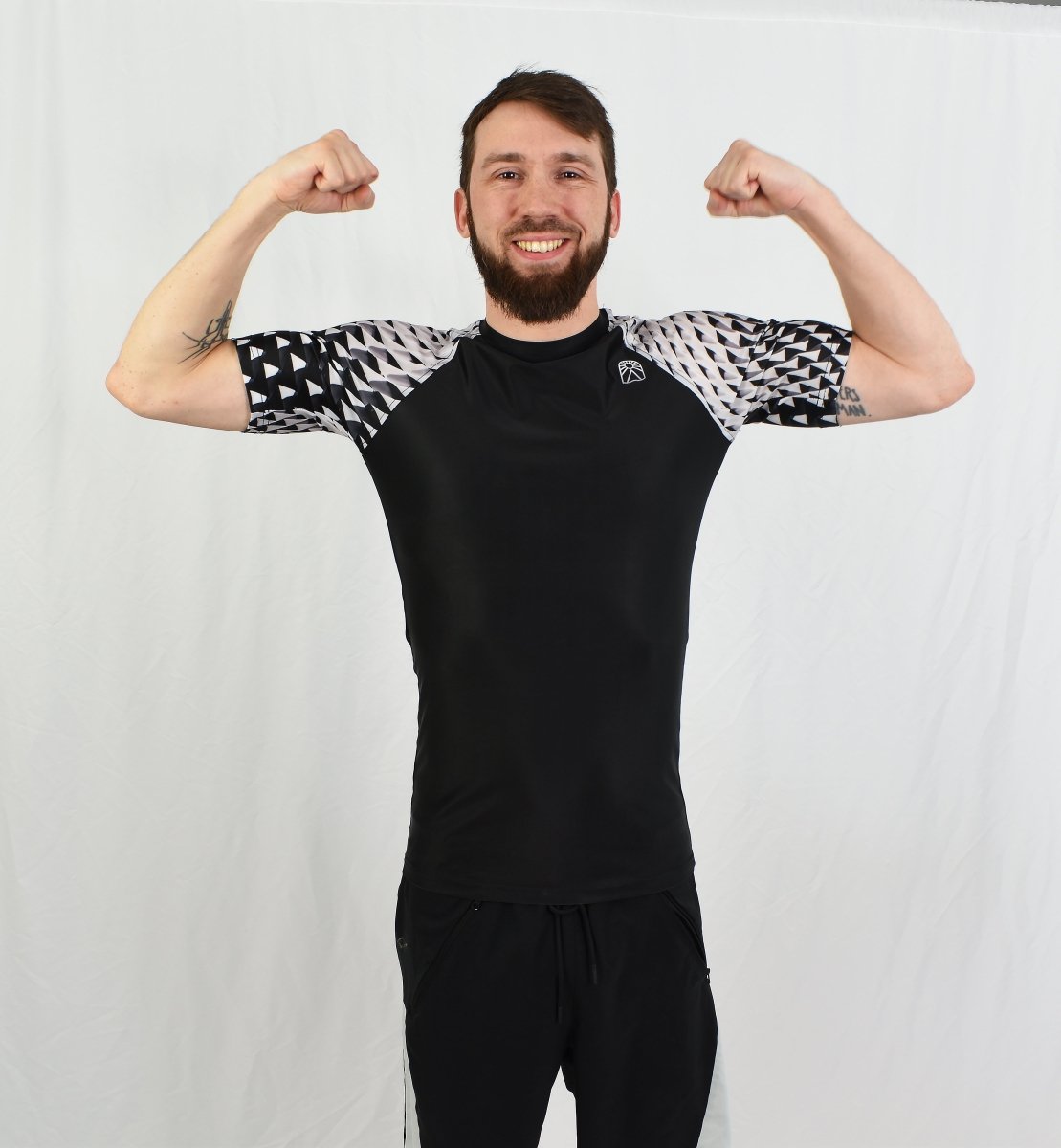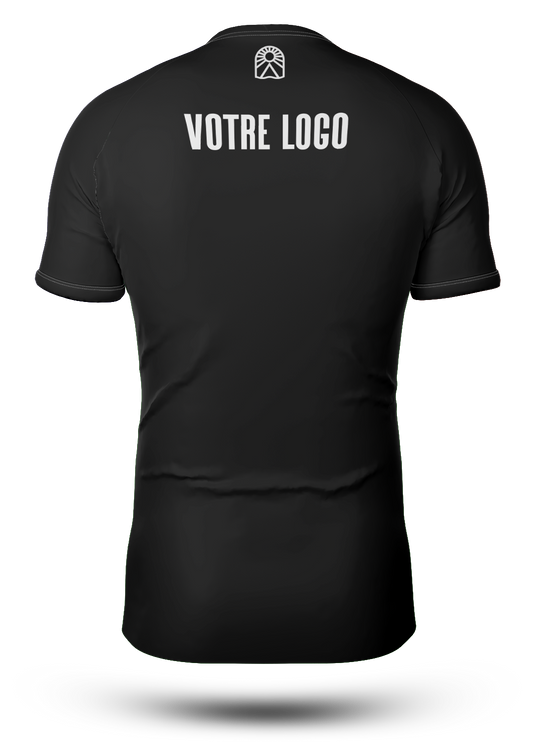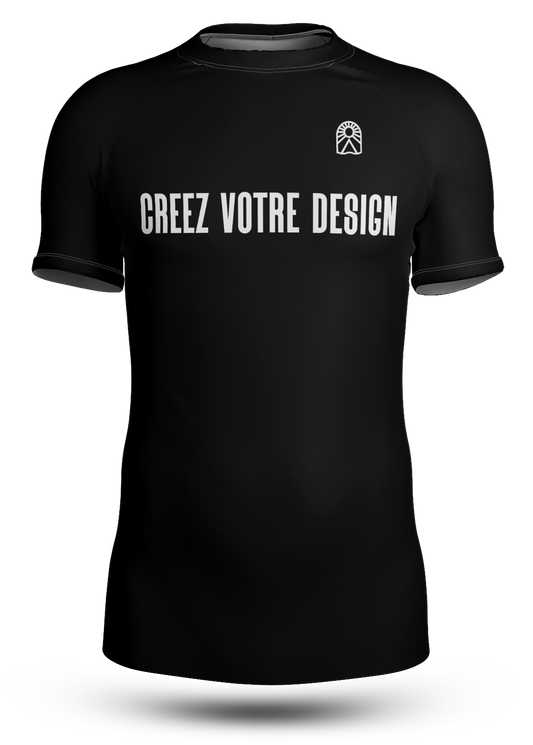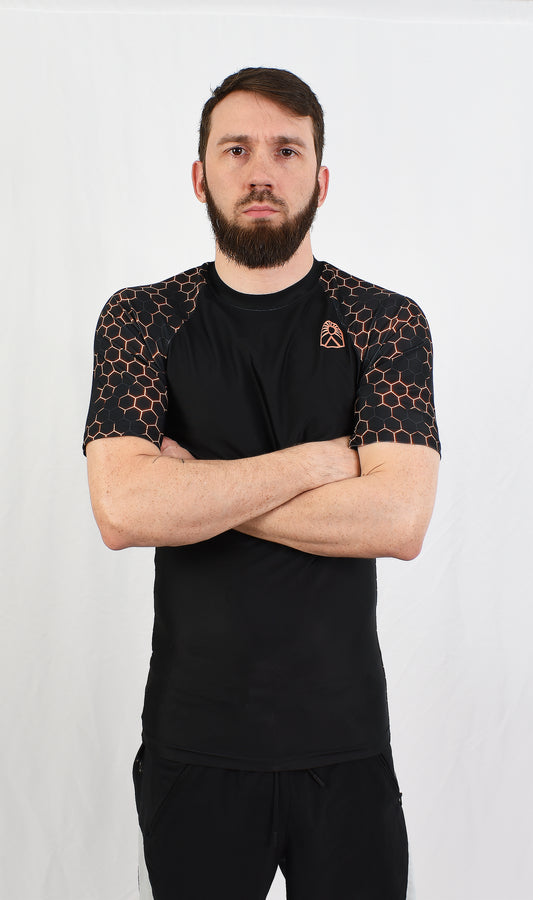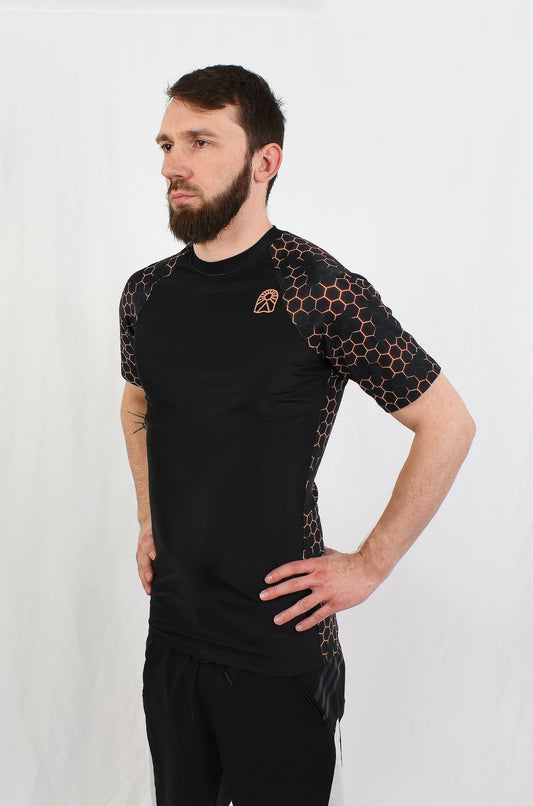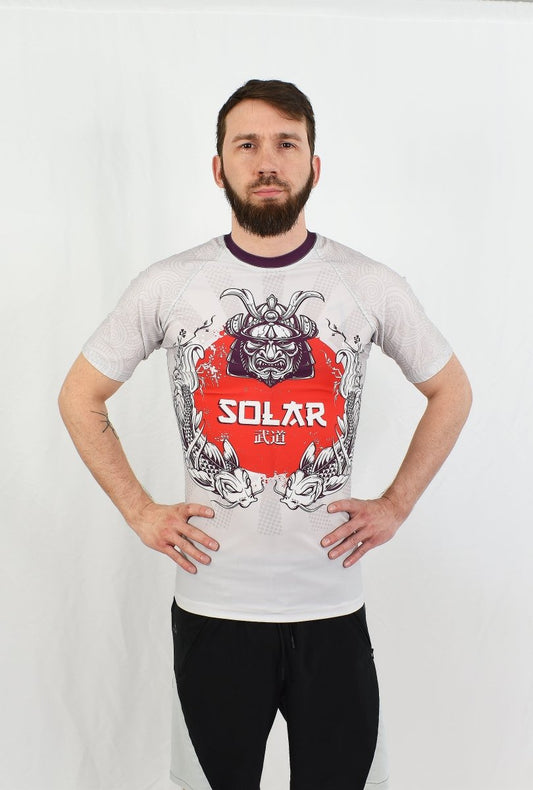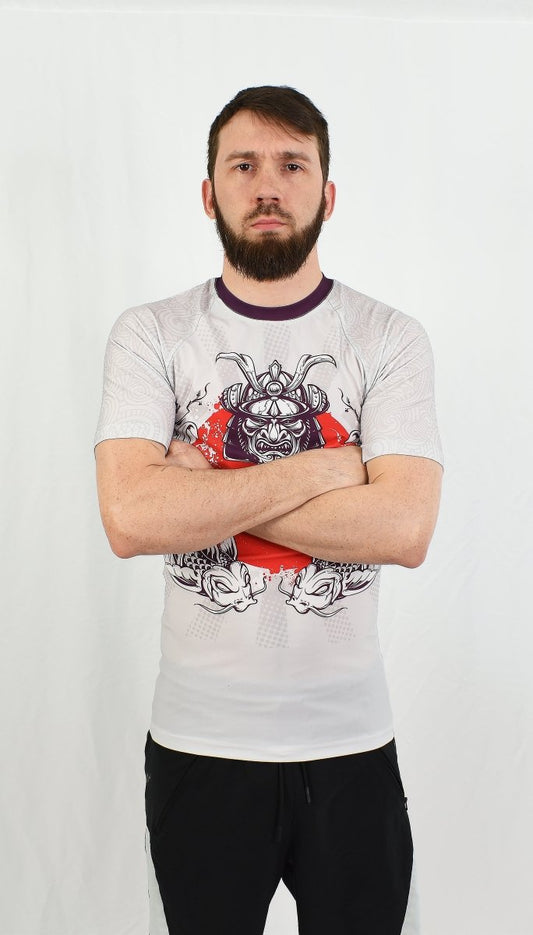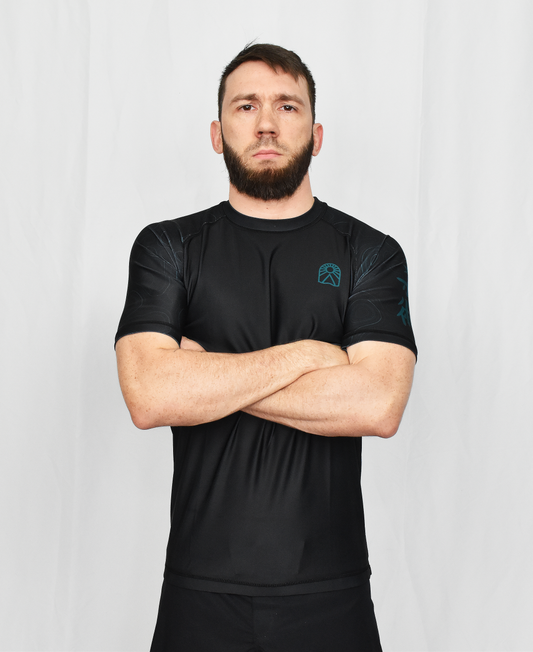
Active recovery after grappling training: our tips
Solar FightwearRecovery after a Jiu Jitsu workout is an extremely important step if you want to progress quickly and be able to train day after day. Without a good recovery method , training one after the other can become very hard on the body and have a greater chance of causing injuries in the short and medium term.
Have you ever wanted to work out, but your body was telling you it wasn't ready? That's normal!
For my part, I remember very well that when I started Jiu Jitsu, I wanted to train twice a week, but my body quickly let me know that it was going to be difficult: I was developing severe pain in the tendons of my elbows. My body was talking to me! Even if my intentions were good, my body didn't want to. So I had to develop techniques to better recover and toughen my body.
In this article, we'll look at various recovery tips after a Jiu Jitsu workout so you can feel better and develop your skills faster. Whether you're a beginner or a seasoned competitor, these methods will help you recover better, day after day.
If you're looking for more general recovery tips for combat sports, you can find our article: Top 5 Recovery Methods for Combat Sports . In this article, we're focusing more specifically on Jiu-Jitsu!
Table of Contents
- Why Active Recovery is Essential After Jiu Jitsu
- The Best Active Recovery Methods for Grappling
- The role of sleep in recovery
- Bonus: Equipment for better recovery
Why Active Recovery is Essential After Jiu Jitsu
When we talk about performance in combat sports, we often think of the hours spent perfecting an armlock, a guard pass, or a sparring strategy.
Yet what happens after training is just as crucial to your progress. Active recovery , in particular, plays a key role in long-term athletic development.
Recovery is just as important as training itself, as it's where your body rebuilds and "repairs" itself. If there's more wear and tear than it can repair, you're in a deficit, and the chances of an injury occurring—a fracture, a sprain, a tear, etc.—are increasing.
Active recovery vs. passive recovery
- Passive recovery: complete rest, sleep, physical inactivity.
- Active recovery: light movements, joint mobilization, low-intensity exercises that promote blood circulation.
Unlike passive recovery, active recovery helps to more quickly evacuate metabolic waste accumulated during exercise (such as lactic acid), reduces muscle tension , and stimulates the supply of oxygen and nutrients essential for the regeneration of muscle fibers.
It's essentially about recovery through activity, but light activity that puts little stress on the body. Its goal is simply to get the blood flowing, flush out waste, and support your body.
The risks of neglected recovery
Recovery is extremely important and you may realize that you are lacking recovery if you experience symptoms or ailments similar to these:
- Chronic pain
- Tendinitis
- Decrease in performance
- Frequent and slow-healing injuries
After an intense Jiu Jitsu session, it's normal to experience some muscle discomfort. However, without proper recovery , soreness known as "DOMS" (Delayed Onset Muscle Soreness ) can become more intense and last for several days. This not only affects your daily comfort, but can also limit your ability to train regularly. Active recovery helps alleviate this soreness by improving blood circulation to sore muscle tissue.
This is what happened to me after a long period where I had chained several training sessions to quickly progress. I trained a lot in Kyokushin Karate, Jiu-Jitsu and a little bit in Kickboxing all these percussions have an impact on the body and it is necessary to let it rest. When the body becomes exhausted, it is less resilient and less precise, the movements become a little more muddled and we have a recipe for an injury! This is what happened to me with a bad kick which gave me 2 fractured metatarsals!

The Best Active Recovery Methods for Grappling
Incorporating active recovery methods after Jiu Jitsu training can make all the difference between continued progress and a performance plateau.
Here are the 5 most effective active recovery methods for jiu-jitsu to help your body recover quickly while still moving.
1. Light walking or stationary cycling
- Duration recommendations (15-30 min).
- When to do it: ideally the same evening or the next morning.
Low-intensity cardiovascular activity, such as brisk walking or riding a stationary bike for 20 to 30 minutes, stimulates blood circulation without adding joint stress.
This type of movement promotes the elimination of muscle toxins, reduces inflammation, and helps release tension accumulated during ground combat. It's an excellent option to incorporate the same evening or the day after an intense sparring session.
2. Dynamic stretching and joint mobility
- Targeted movements for the neck, hips, shoulders.
- Allows you to work on your mobility and flexibility
Combat sports like grappling require great joint fluidity. Dynamic stretching (slow, controlled movements) helps restore joint range of motion while maintaining muscle activity. We work on mobility and flexibility.
Combine them with targeted mobility exercises (shoulder circles, hip rotations, etc.) to loosen stressed areas like the hips, back, and neck. This helps prevent stiffness and maintain functional flexibility.
Take it easy with this exercise, as it's important to understand that when you exercise, you can tear muscle fibers (this is normal). And stretching after tearing muscle fibers can have the opposite effect: creating tears. The goal isn't to push your flexibility limits, but simply to move, loosen joints, warm up your muscles, and facilitate blood circulation.
3. Yoga or Jiu Jitsu specific flow session
- Benefits on breathing, flexibility and mental recovery.
Yoga is a valuable ally for fighters. In addition to improving your flexibility, it teaches breath control , which is essential in stressful or fatigued situations on the mat. Flows inspired by Jiu Jitsu movement (like those in " Yoga for BJJ ") allow for deep muscle relaxation, while strengthening certain often-neglected postural chains. It's also an excellent practice for calming the mind and promoting mental recovery.
Moreover, in this article, we cover in detail all the benefits of Yoga for Jiu Jitsu: The Benefits of Yoga for Brazilian Jiu Jitsu Fighters
4. Use of foam roller and self-massage
- Focus on areas that are tense after grappling: trapezius, hamstrings, calves.
Using a foam roller or a lacrosse ball is an excellent way to release localized muscle tension. These tools work trigger points (muscle knots), promote tissue elasticity, and reactivate circulation in tight areas. Focus on your calves, quads, glutes, back, and pecs—muscle groups often receive a lot of work during grappling sessions.
5. Controlled breathing and active relaxation
Often overlooked, conscious breathing is key to recovery. Techniques like diaphragmatic breathing or the Wim Hof Method help regulate the nervous system, lower heart rate, and promote deeper recovery. You can practice them lying down, after a cold shower, or as part of an active meditation session.
Each of these methods helps optimize recovery after Jiu Jitsu training , while respecting the specific needs of combat sports athletes.
The most important thing is consistency: Prevention is better than cure!
The role of sleep in recovery
Of all the recovery strategies, sleep remains the most powerful, the most natural, and often the most overlooked. After a demanding Jiu Jitsu workout, it's during sleep that the body does most of its muscle repair, hormonal regulation, and neurological strengthening.
Not only does sleep aid recovery after a workout, but it's also the time when the brain consolidates what it's learning. Every new sequence memorized in rolling, every transition practiced in drilling, is recorded by the brain during its sleep phases. A lack of sleep can therefore impair your ability to retain and effectively reproduce the movements learned during training.
How many hours of sleep do you need to recover effectively?
For a regular Jiu Jitsu practitioner, the general recommendation is to aim for between 7 and 9 hours of sleep per night. During periods of heavier training load, longer nights or even the addition of 20- to 30-minute naps may be warranted.
We are all different, but the important thing is not to neglect sleep and to take the time to get good, restorative sleep to give your body the opportunity to repair and rebuild itself.
Good sleep isn't a luxury: it's critically important for recovery after a Jiu Jitsu workout . By taking care of your sleep hygiene, you're directly investing in your performance, longevity on the mat, and overall well-being.
A few tips for sleeping better after a good day of training:
- Avoid screens at least one hour before bed: blue light disrupts melatonin secretion. It's incredible how our screens can affect the quality of our sleep, so it's important to remember.
- Choose a light meal , rich in complex carbohydrates, to promote relaxation.
- Hydrate well , but avoid drinking just before going to bed so as not to interrupt your sleep.
- Create a bedtime ritual (gentle stretching, deep breathing, warm shower) that signals to your body that it's time to rest. Reading a good book is a great habit to slow down your body before bed and avoid screens.
Bonus: Equipment for better recovery
Recovery isn't just about stretching, sleep, or nutrition. The right equipment can also play a key role in your ability to recover effectively after a Jiu Jitsu workout.
Here are some essential items that can support your body in its regeneration phase, on and off the tatami:
A good rashguard: muscle support and improved recovery
Rashguards aren't just for protecting your skin during your workout. Thanks to their compressive effect, they stimulate blood circulation, reduce muscle vibration, and help accelerate the drainage of toxins after exercise. Wearing a quality rashguard after a workout can promote faster recovery while also providing optimal thermal comfort.
💡 At Solar Fightwear, our rashguards are designed to withstand the intensity of training while promoting muscle recovery thanks to their fitted cut and breathable technical fabric. Click here to discover all our rashguards for Jiu Jitsu
Compression Shorts: Post-Workout Comfort and Support
If it's true for rash guards, it's also true for shorts! Compression shorts aren't just comfortable, they're also effective at helping maintain gentle pressure on leg muscles, which can reduce post-workout soreness and improve the feeling of lightness.
💡 At Solar Fightwear, our compression shorts are designed to be both comfortable and essential for your performance on the mat and in your training thanks to their fitted cut and breathable technical fabric. Click here to discover all our compression shorts and grappling shorts
Massage accessories: targeted recovery tools
Foam rollers, massage balls, and even massage guns are increasingly used by Jiu Jitsu practitioners to relieve muscle tension. Incorporating a few minutes of self-massage into your post-workout routine can release tension and speed recovery.
Finally, make recovery your competitive advantage.
In the world of Jiu Jitsu and grappling, progress isn't just about sweating on the mat. It also happens outside the dojo, in the moments when you allow your body to regenerate, adapt, and grow stronger.
Many athletes seriously neglect this aspect and pay the price. Getting injured isn't much better if you have to be away from the dojo for a week or two. You're wasting valuable time.
Adopting active recovery methods— like light walking, stretching, yoga, or using a foam roller—will help you preserve your energy, avoid injury, and maximize every hour spent training. Combined with quality sleep , proper nutrition, proper hydration, and recovery-friendly equipment, you'll create the optimal environment for excelling.
At Solar Fightwear, our mission is to support local athletes every step of the way—on and off the mat. Our technical apparel is designed to support your performance, but also to provide the comfort and support you need for optimal recovery.
